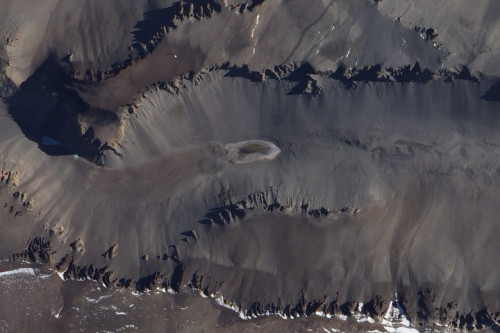I’m big fan of the NASA Earth Observatory website run by the Goddard Space Flight Center. Their Image of the Day series showcases stunning imagery and applications of remote sensing every day, in the style of the long-running Astronomy Picture of the Day. They also hold a monthly “puzzler” competition, where they post a satellite image without any annotations and ask readers to identify the location and why it’s interesting. For the December puzzler, they posted the following image:

The scene depicts a valley in a cold climate, with some kind of body of water (or other liquid?) at center. The sinuous shape suggests glacial activity, though this conflicts with the lack of snow and ice. Notably, no vegetation is visible anywhere, making it look very similar to a HiRISE image of Mars. I then thought that this could be the McMurdo Dry Valleys in Antarctica. In college, I saw a number of presentations from professors and graduate students who had conducted research in the Dry Valleys because of the similarities to Martian climate. After only a few minutes of hunting around on Google Maps, I found the location. But what was in the center of the image that looked like a lake?
The Wikipedia page for the McMurdo Dry Valleys lists a number of lakes. I clicked on the link for Don Juan Pond, which was noted to be the most saline of all, and bingo: the image was a perfect match. I quickly wrote up a description and submitted it in the comments section. Lo and behold, I was the first commenter and won the puzzler!
As it turned out, the research paper that inspired the puzzler was coauthored by Brown researchers Jay Dickson and Jim Head. Perhaps it was the memory of one of their presentations that made me think of the Dry Valleys. Either way, what a small world.